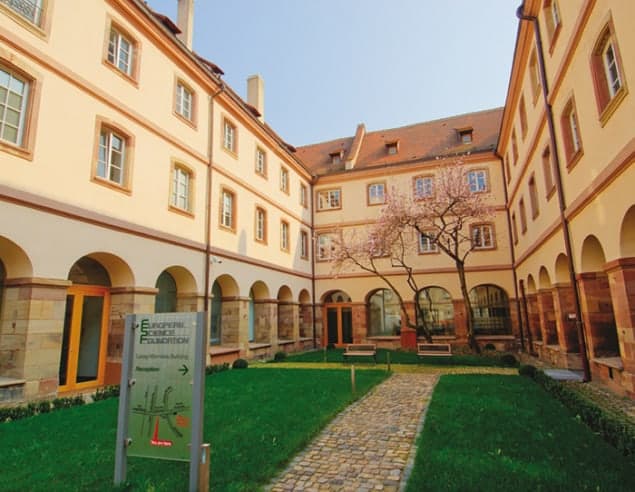
Members of the European Science Foundation (ESF) have voted to keep the 40-year-old research organization alive, but with a very different and much-reduced scope. The vote, which took place during the ESF’s annual general assembly at the end of November, confirms that the foundation will no longer fund pan-European research collaborations, but instead will provide services such as peer review.
Set up in 1974 and based in Strasbourg, France, the ESF currently has 66 member organizations – including funding agencies, research institutions and learned societies – from 29 countries. However, many of the national research councils that provide the organization’s funding view the ESF as too expensive, overly complex and unable to compete with an increasingly powerful European Commission. In 2011 they set up a new organization – Science Europe – to promote their interests in Brussels, and at the same time began to wind down many of the ESF’s traditional activities.
Expanded membership
The recent vote saw 51 members in favour and three against a motion to change the ESF’s statutes to allow new kinds of members, such as private organizations, to join. “Technically, it wasn’t a vote on dissolution,” says ESF chief executive Martin Hynes, “but there would have been de facto dissolution had members not voted to approve the changes in statute.” Hynes says that the ESF will now focus on “science services” such as peer-reviewing grant proposals or evaluating research institutes.
Calls for proposals for existing programmes will not be renewed, he says, but one or two current activities will continue, including the operation of several expert panels, such as the Nuclear Physics European Collaboration Committee. Funding will also be stripped back from a high of about €60m a year in 2012 to just €2m this year, with an associated reduction in staff from around 130 to 30.
Financial-viability test
The new structure will come into force at the end of 2015, once the plan has been subjected to a “financial-viability test” in May, and formally approved first by the ESF’s governing council and then by the assembly in November. For Hynes, however, money is not the stumbling block. “The financial viability is pretty well proven,” he says. “The question is whether there will be enough members to carry the organization forward with credibility.” Hynes adds that many of the existing members from Europe’s larger countries will probably leave, but he hopes that other organizations will join, such as the AXA Research Fund. “We would be happy if we had 20 members in the new organization,” he says.
According to Peter Fletcher, head of international relations at the UK’s Science and Technology Facilities Council (STFC), most of the French and German member organizations have already resigned, while the STFC and the other UK research councils are in the process of doing so. Fletcher describes the creation of Science Europe and the new-look ESF as “a positive opportunity for European science”.



